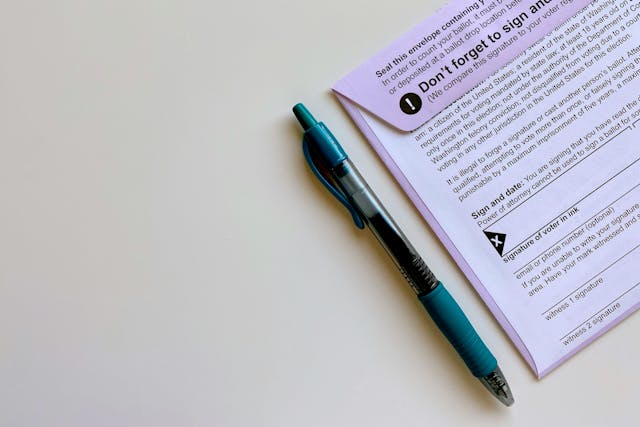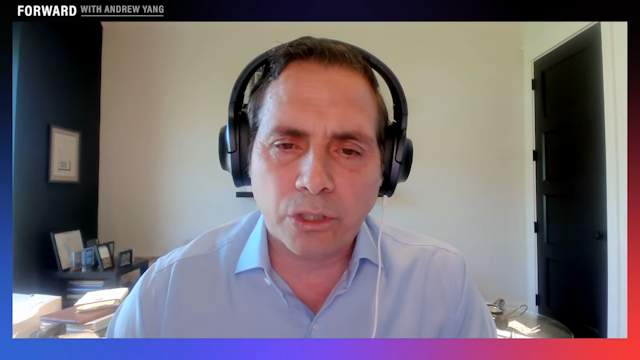On the Independence of Independents: Are you an Independent in Name Only?

Among American political scientists and partisans of the Democratic and Republican parties, it is widely held that the so-called “Independent voter” is nothing more than a myth. This might come as news to the millions of Independent voters in the United States. Are you an Independent-in-name-only?
Given the growing number of self-described Independents nationwide, the corresponding increase in their political clout, and the well-developed media narratives that seek to pigeon hole them between the Democratic and Republican parties, it is only to be expected that they should encounter increasing resistance – and even outright attacks – from the partisans of the political status quo. One of the most common critiques of Independents states that the Independent voter is nothing more than a myth. Most recently, Alan Abramowitz has sought to “set the record straight” by “correcting myths about Independent voters” in an article for the Center for Politics blog.
“The large majority of independents are independents in name only. Research by political scientists on the American electorate has consistently found that the large majority of self-identified independents are “closet partisans” who think and vote much like other partisans,” writes Abramowitz.
The political science research to which Abramowitz alludes is based to a great extent on a book from 1992: The Myth of the Independent Voter by Bruce E. Keith et. al. The influence of the work is apparent, for instance, in an academic paper published earlier this year in The California Journal of Politics and Policy by Edward L. Lascher, Jr. and John L. Korey. In the paper, entitled “The Myth of the Independent Voter, California Style,” the authors analyze a series of field polls of the California electorate dating back to the early 1980’s and argue that the basic propositions put forward in Keith’s book “generally hold up well.”
Confronting “the sharp rise in the proportion of voters declining to state a party preference and the supposed increasing importance of political independents,” Lascher and Korey advise skepticism on the basis of the fact that 1) the majority of self-described independents “lean toward” one or the other major party and tend to vote in a manner consistent with that leaning, and 2) that the proportion of Independents who do not lean toward either major party has not increased significantly in recent years, even with the increase in Independent identification, and these so-called “pure” Independents tend to be less politically engaged than partisan “leaners.”
But how trustworthy are such findings? The results are, of course, conditioned by the questions put forward in the field polls under consideration. Typically, respondents are asked if they think of themselves “as a Republican, a Democrat an Independent or what?” Those who answer that they are Republicans or Democrats are then asked if they are strong or weak supporters of the party in question, while those who state that they are Independent are then asked whether they lean toward one or the other major party.
In other words, Independents are prodded to identify themselves with a major party, while Democrats and Republicans are simply asked to state their level of identification with their chosen affiliation. Significantly, Democrats and Republicans are never asked whether they “lean Independent” or toward a third party, and Independents are never asked whether they would rather support an Independent or third party over the Democrats or Republicans.
Furthermore, the fact that Independents tend to vote for Republicans or Democrats does not imply that they are not Independent. In many if not most elections, voters have no choice but to vote for Republicans or Democrats because the Republican and Democratic parties have rigged our system to exclude Independent and third party candidates from the ballot. If you do not lean toward one or the other major party, what incentive do you have to vote in an election where there are only representatives of those parties on the ballot? Perhaps the majority of Independents are not casting their ballots for one major party, but rather against the other.
While such research may help dispel the conventional wisdom popularized in the political press which posits that Independents are a monolith of non-partisan moderates and centrists, it actually tells us very little about Independents themselves and may even do nothing more than replace one myth with another, namely, that Independents effectively do not exist.
Yet Independents are virtually everywhere. They span the ideological spectrum. There are conservative, liberal, moderate, libertarian and progressive Independents. What they all have in common, however, and what distinguishes them from Democrats and Republicans, is their refusal to identify with the Democratic and Republican parties, and indeed, their rejection of any party affiliation whatsoever.
In much of the political science research devoted to Independents, one key aspect of our nation’s politics is rarely if ever mentioned, let alone considered with a critical eye: the two-party system itself. Beginning as early as 1950, when the American Political Science Association’s Committee on Political Parties released an influential report entitled “Toward a More Responsible Two-Party System,” American political scientists have long provided academic cover for the consolidation of the two-party state and the centralization of all political power in the hands of the Democratic and Republican parties.
In fairness to the field however, it must be noted that not all American political scientists are willing to carry water for the Democratic and Republican parties. Reflecting on three decades of political science research that followed the report, Theodore J. Lowi of Cornell University noted in 1983: “One thing they do not question at any time: the virtue of a two-party system and the need to focus all reform recommendations on its preservation.”




